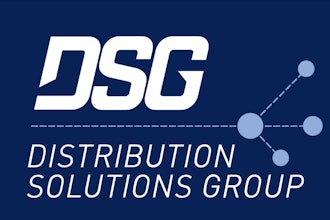
With the Internet of Things (IoT) and predictive analytics becoming more mainstream – the market is expected to reach $267B by 2020 — companies across industries and verticals are starting to prepare for the impact this game-changing technology will have on their business.
For manufacturers specifically, IoT has led to ‘smarter’ equipment. Decision making using sensor-based, IoT data is leading to better results, and ultimately accelerating the use of real-time and predictive analytics in manufacturers after-sales service operations. However, there is a flipside to the benefits of IoT for manufacturers, as Right to Repair bills are appearing in legislatures around the world.
Right to Repair legislation has now appeared in eight states, and is mostly centered around Apple product owners wanting to repair their devices on their own or work with an independent provider, opposed to working directly with the manufacturer. While the legislation is currently focused on high-tech and electronics, it could have a residual impact on all manufacturers with service organizations. The legislation would require manufacturers to “sell repair parts to consumers and independent repair shops” and “make diagnostic and service manuals available to the public.”
Most recently, farmers in Nebraska have started hacking their equipment with firmware developed in Eastern Europe and available on invite-only, paid online forums – all to repair their own equipment and avoid long wait times to see a service technician, or traveling hundreds of miles to the nearest dealer to have their equipment repaired.
It’s clear that today’s customers expect quick, reliable service on demand and for manufacturers, this means they must optimize their after-sales service organizations. The status quo of reactive, break-fix service models is no longer sufficient, and companies must invest in human capital and new technologies to transform their businesses to become more proactive and focused on maximizing product uptime. Below are three strategic focus areas where manufacturers can start implementing change today to prepare for Right to Repair laws — ultimately improving financial performance and exceeding customers’ expectations.
1. A subscription-based service model focused on maximizing product uptime is critical to success.
As more products are equipped with smart sensors, it is more important than ever to shift from a reactive, break-fix service model to one focused on maximizing product uptime, or preemptively repairing equipment before it ever fails. Right to Repair laws have surfaced because end-users feel helpless when it comes to repairing their own equipment. In many industries, including agricultural equipment, heavy equipment and mining, equipment is viewed as a revenue-generating asset for the owner. If the equipment is down, it can destroy crop yield for a farmer, and Right to Repair laws compound this problem.
To ensure customers rarely face equipment downtime – which results in lost revenue and productivity – manufacturers must leverage IoT data to ensure parts are pre-emptively replaced before they fail. An after-sales service organization truly focused on maximizing product uptime will eliminate much of the burden on customers to make their own repairs. It’s time for manufacturers to reinvent their service organizations, adopting sophisticated, cloud-based solutions and new business processes to optimize service parts inventory levels while maximizing product uptime, which not only will lead to improvements in revenue, gross profits and operational efficiency, but also the overall customer experience.
2. Fair service parts prices are a competitive differentiator
It may seem obvious that selling a service part for the optimal price is a key way to create competitive differentiation, but unfortunately too many manufacturers are still using outdated methods like cost-plus or simple spreadsheets. With Right to Repair laws pushing for end-users to be able to purchase OEM parts on their own, competitively priced service parts will become more important than ever.
Modern service parts pricing technologies incorporate data from customers, competitors, IoT platforms and other legacy systems to create the optimal price – ensuring the end customer has a great experience, while the manufacturer is simultaneously maximizing revenue and margins.
3. Optimizing service parts inventory management is more important than ever
Currently, the break-fix model many manufacturers use today leads to long customer wait times due to poor part availability, excess stock and part obsolescence.
This ‘just-in-case’ way of doing business most often creates overhead that negatively impacts both the customer experience and the manufacturer’s bottom line. To succeed, manufacturers must invest in both human capital and technology to fully optimize the service supply chain. While Microsoft Excel spreadsheets and legacy ERP systems may have been helpful for managing service parts in the traditional after-sales service model, using these outdated tools is no longer sufficient to meet customers’ needs for maximized product uptime.
Cloud-based service parts management solutions easily integrate into existing ERP systems, allowing manufacturers to track service parts, eliminate excess and obsolete stock and forecast when new parts are needed. These practices are critical for meeting customer delivery expectations and maintaining an edge over both direct competitors and third-party ecommerce sites. Beyond keeping products in the right place at the right time, service parts inventory management technology also reduces carrying costs.
 Gary Brooks, CMO of Syncron
Gary Brooks, CMO of SyncronRecently, the Association of Equipment Manufacturers (AEM) and the Equipment Dealers Association (EDA) launched a Statement of Principles that providers end-users with the tools and resources they need to “minimize downtime and to maximize productivity of farm equipment.” It’s clear manufacturers are ready to rethink the way they manage after-sales service, and those that properly leverage IoT and advanced technologies will be well equipped to succeed in this new way of doing business, ultimately improving both the overall customer experience and financial performance, while edging out the competition.
Gary Brooks joined Syncron in 2015 as Chief Marketing Officer. With 20 years of marketing experience, Brooks is a revenue focused B2B marketing executive who believes in qualitative work with quantitative results to deliver breakthrough revenue performance.






















